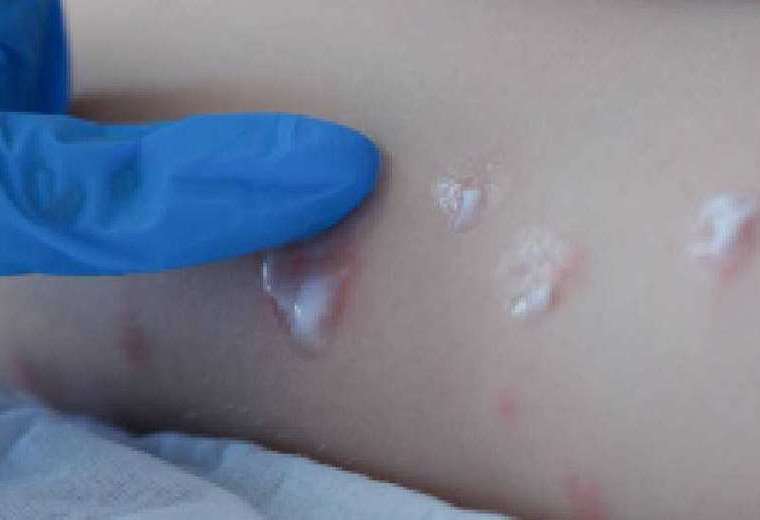The screening criteria for Alzheimer’s disease, the most frequent of dementias, underwent a profound transformation in the last decade to the point that today it is possible to reach a presumptive diagnosis between 15 and 20 years before the first clinical symptoms of memory loss appear, according to specialists explained on World Day.
This entire revolution took place thanks to the identification of “biomarkers” or biological indicators -such as the TAU protein and amyloid beta- present during its “silent phase” or preclinical phase, which can precede that of observable external symptoms by up to two decades. .
“The most novel thing in terms of diagnosis is that today there are biomarkers that allow something surreal, which is to diagnose the disease with certainty and early before it happens,” he told Télam. psychiatrist and dean of the Faculty of Medicine at UBA Ignacio Brusco.
From there, it’s possible “delay that onset through a combination of high-tech medicine and primary care techniques”which results in a longer survival and better quality of life.
For your part neurologist Juan Ollariwho is in charge of the Cognitive Neurology Center (Ceneco) of the British Hospital in Buenos Aires, explained that although “diagnostic criteria have changed worldwide and today they are based above all on biomarkers” traceable through imaging studies or cerebrospinal fluid, these are still “not approved for clinical use by Anmat.”
“You can do (biomarker studies) because they are available, that is, you can do a positron emission tomography (PET) or you can do a lumbar puncture to determine the presence of beta-amyloid or Tau protein, but they were not officially approved -I think due to cost issues-, they have to be paid by the patient and they are relatively expensive”, explained Ollari.
Scientific research worldwide is also focused on development of less invasive diagnostic techniques than lumbar puncture “which implies a risk”, and there are already “some works that are evaluating the measurement (of biomarkers) by blood and saliva tests although “they are very in diapers”.
That Alzheimer’s is a dementia implies that it is a disease characterized by “severe impairment of mental capacity in different cognitive and behavioral aspects, with sufficient severity to interfere with functioning in activities of daily living”, according to the definition of the “Guide for the approach of people with Alzheimer’s disease and other dementias” published last year by PAMI.

Around the 70% of people with dementia have Alzheimer’s, a gradual, chronic, neurodegenerative, incurable and terminal pathology that is related to the accumulation of toxic substances in the brain, such as beta-amyloid proteins and tau proteins.
According to estimates by Alzheimer’s Disease International (ADI), in Argentina some 503,000 people suffer from the disease.
Symptoms and risk factors
Symptoms get worse over time: start with dDifficulty remembering newly learned information continue with problems in the use of language and disorientationthey happen later changes in mood or behavior Y difficulty in making decisions, to arrive at one last stage in which patient can no longer walk and has swallowing problems.
As for the risk factor’sthe main one is being over 65 years old, although there are also genetic conditions.
“The prevalence is only 5% at 60 years of age, while at 80 years of age it occurs in more than half of the population,” Brusco explained.
to those factors of non-modifiable risk, others of modifiable character like the scardiovascular ailment -hypertension, diabetes, cholesterol, smoking, obesity-, a sedentary lifestyle, an unhealthy diet, lack of cognitive stimulation or hours of sleep.
“It has been proven that scheduled aerobic exercise of at least 20 minutes 4 times a week doubles the time for the evolution of the disease, that the existence of social support networks reduces the chances of developing Alzheimer’s by 6% and that hearing loss increases 7%, a little less than stress and depression (3 or 4%), “he said.

Beyond the advances in the development of biomarkers not yet approved in Argentina, The diagnosis of Alzheimer’s continues to be mostly clinical, that is, based on cognitive assessments (memory, problem solving, attention and language skills), laboratory tests and brain imaging.
“Today all international diagnostic criteria require the presence of biomarkers because At the level of clinical analysis there are many pathologies that can look like Alzheimer’s and not be; and the only chance of ddiagnose it with certainty -until now- was the pathological anatomy (cerebral, already with the deceased patient),” explained Ollari.
As for the genetic factors, Brusco explained that unlike biomarkers, “it does not mark detection but rather the risk” of suffering from the disease.
“In some cases, Alzheimer’s disease is associated with certain genetic faults that can be transmitted from parents to children and that coincide with pictures of early onset -at 50 or 55 years-; but they represent between 3 to 4% of the forms of the disease, they are very rare,” said Ollari.
Treatment
Regarding treatment, it is divided into pharmacological and non-pharmacological.
“The youPharmacological treatment attacks two legs of the disease: for the cognitive leg there are only treatments that are intended to delay, delay or slow down the progression of symptoms; while for the behavioral paw What is recommended is non-pharmacological measures, if possible, so that you can deal with your problems with other tools,” Olleri said.
In this sense, Brusco pointed out that “there is withdrawal of harmful medication, such as antipsychotics, which were given lightly” until it was shown that “they double mortality after three years of using these drugs” in patients with Alzheimer’s.
“Before, Alzheimer’s was diagnosed later, there was no specialized treatment, the patient evolved left to his fate. Today it is diagnosed much earlier and by starting treatment earlier we guarantee a slowdown in the progression of the disease,” concluded Ollari.








